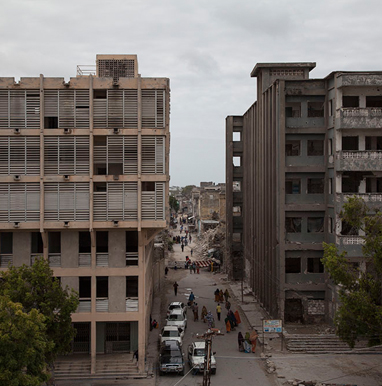MOGADISHU – LOST MODERNS Rashid Ali & Andrew Cross 07.03.14 – 26.04.14
The Mosaic Rooms are pleased to present Mogadishu – Lost Moderns, the first exhibition to explore Mogadishu through its architecture and urban environment, narrating the story of Somalia’s journey from traditional African nation via colonisation and post colonialism to emergent independent state. This trajectory may be familiar to Africa but its manifestations are not: how was Mogadishu created as a modern African capital?
Challenging familiar mainstream images that depict the city solely as a place of conflict and destruction, Somali-British architect Rashid Ali and British photographer Andrew Cross offer a unique account of what remains of the city’s urb an fabric and key modernist symbols after two decades of civil conflict. These specially commissioned photographs are presented alongside rare archival photographs, not yet presented to the public, which document the city’s architecture under Italian colonial rule.
an fabric and key modernist symbols after two decades of civil conflict. These specially commissioned photographs are presented alongside rare archival photographs, not yet presented to the public, which document the city’s architecture under Italian colonial rule.
Examining this urban process the exhibition reflects on how under Italian colonial rule the former compact traditional Arab style city was transformed into a cosmopolitan modern African city at the beginning of the 20th Century. However it primarily focuses on the spatial developments that took place after independence, and in particular documents the new architectural symbols and city spaces that were a part of a wider social, political and economic strategy to articulate the newly claimed statehood.
Due to the destruction of much of its architecture, infrastructure and any historical archives associated with it, there has been an absence of any literature and discourse on the cultural development of Mogadishu through its architecture and built form. Rashid Ali and Andrew Cross’ exceptional work, resulting from their trip to Mogadishu in the summer of 2013, provides a framework to better understand and explore this development.
This timely exhibition offers a space for reflection on the value of civic architecture and heritage preservation. It also presents a unique perspective of a city in conflict, and an opportunity to promote new thinking on the broader discourse of urbanism in Africa and the Arab world.


